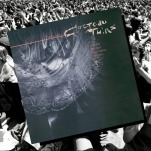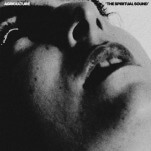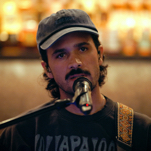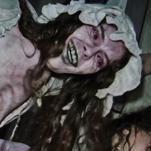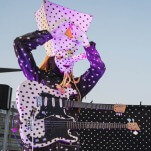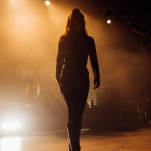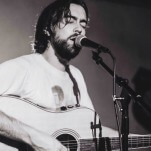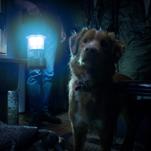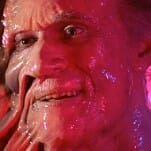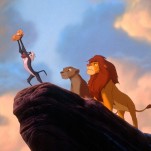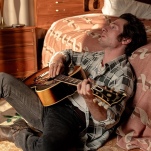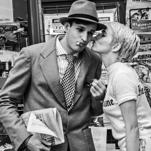Ghostbusters II and the Art of the “If It Ain’t Broke” Sequel
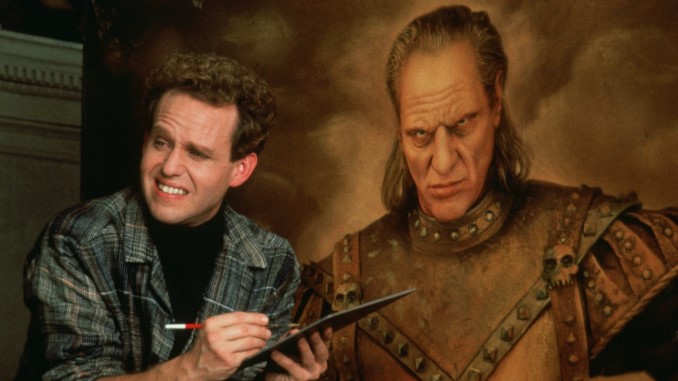
Living through a cinematic era defined by a soulless obsession with IP and the endless franchising opportunities inherent in “shared universes,” it can be easy to forget that once upon a time, even the idea of a direct follow-up to a popular film was considered a novel, risky notion. Where a summer blockbuster of 2024 has little to zero chance to move into production without a previously successful IP to anchor itself to, studios and filmmakers of a bygone age once believed that audiences would quickly tire of repetition or familiarity. Until the 1970s, in fact, no major film had even been released through the Hollywood system bearing a numerical “part II” in its title. That all changed with 1974’s The Godfather Part II, wedging a foot in the door of sequelization that would be flung wide open in the 1980s, the decade when movie sequels increasingly became viewed as both a golden goose and a perpetual punchline. It was this more cynical age that birthed the likes of 1989’s Ghostbusters II, and Hollywood has never really been the same since.
Ghostbusters II is of course a direct sequel to 1984’s comedy classic Ghostbusters, and is a remnant of the kind of era where a full five years passing between a hit film and its sequel wasn’t particularly unusual. Of course in the actual case of Ghostbusters II, that long layover was more due to the genuinely arduous, plodding process of getting this film made, a creative struggle that was beset by studio meddling, differences of opinion, performer squabbles, multiple screenplays and extensive reshoots. It’s a film that was lucky to lumber across the finish line at all, only to be met by a general critical drubbing and disappointing box office receipts, at least in comparison with the original. And for decades, that’s what the world thought of it: Ghostbusters II existed as a prominent member of the “lesser sequels” canon, a persistent afterthought that only reentered the cultural conversation more recently thanks to the modern string of Ghostbusters reimaginings and legacy sequels.
As it celebrates the 35th anniversary of its release, though, Ghostbusters II stands out to me today in the same way it always has: As a consistently funny and lighthearted extension of the first film, a proud entry in that particular 1980s art I like to refer to as the “If It Ain’t Broke” Sequel. At the end of the day, this is the film’s uniting ethos: People liked the first movie, so let’s just do it all again. Over and over, it goes out of its way to return everything to the status quo of the 1984 original and cycle through the same beats … often with almost as much success! You might even say that its approach laid the groundwork for the modern legacy sequel, in the sense that Ghostbusters II predicted just how much audiences would eventually come to yearn for comfortable familiarity and the safety of the status quo.
Ghostbusters II’s Supernatural Déjà Vu
It’s ironic that this film would end up as a poster child for the “run it back” theory of sequelization, because that’s by no means how head writer Dan Aykroyd originally conceived it. His first draft of the screenplay contained nothing about a painting haunted by Vigo the Carpathian, and instead made Sigourney Weaver’s Dana Barrett more of a central focus, as she is kidnapped during a trip to Scotland after stumbling into a mystery involving Celtic folklore, fairy rings and an underground civilization. The Ghostbusters team would then get drawn into a rescue operation, meaning that the film would have had very little New York City influence. This ultimately discarded script has since assumed the status of apocryphal genre legend, much like Aykroyd’s later screenplay for the never-made Ghostbusters III: Hellbent, which would have seen the team passing through the veil into a parallel, hellish version of NYC. This becomes a running theme of the series in its own way, with Aykroyd’s fanciful ideas repeatedly being sanded away in favor of safer and more familiar alternatives.
As for Ghostbusters II, in the course of revamping the script with Harold Ramis, the story gradually began to be reshaped into what we ultimately see in the film: The city is again threatened, this time by the painting-bound spirit of Vigo (“The Butch”) of Carpathia, which manifests a river of emotionally charged pink slime in abandoned subway tunnels as he seeks to be reborn into a physical form by stealing Dana Barrett’s infant son Oscar. As in the first film, it’s Dana’s experiences–now inexplicably working to restore priceless art, rather than performing in the symphony–that draw in the Ghostbusters to investigate what ends up being a city-wide supernatural threat, which only they can solve.
But like J.J. Abrams firing up his nostalgia engine to craft The Force Awakens, Ghostbusters II begins from a place that is profoundly uninterested in actually seeing how the world established in the first film would have evolved in the wake of its climactic events. One would expect the Ghostbusters to have become worldwide celebrities following the events of the “Manhattan Crossrip” of 1984, right? They did, after all, defeat a building-sized marshmallow man in an event witnessed live by thousands, and presumably broadcast around the world. One would no doubt have expected these events to have been followed by a global spiritualist revival of some kind, considering that they more or less proved the existence of an afterlife in front of an audience of millions. Surely, there would be pilgrims beating down the door of the Ghostbusters office, desperately asking to reconnect with loved ones or fulfill their own spiritual agendas.
But instead … nope! Five years after the events of the first film, the Ghostbusters have somehow disbanded, a throwaway line about having been sued for property damage sufficing to explain how their incredibly valuable service somehow no longer exists. Venkman is now hosting a hacky TV psychic talk show, while Egon researches human emotions and Ray/Winston debase themselves dancing for children at birthday parties. No other ghost removal service has risen to fill the void following their departure, and by and large the city acts as if the massive supernatural incident at the end of the first film never even occurred. The boys are back to near anonymity, forced to start again from the ground up. Because the first film dealt with their efforts to launch a struggling business, so too must this one.
All of the other important plot elements then follow suit, in order to return to the baseline first established in 1984. Venkman and Dana were a newly minted item at the end of Ghostbusters? Well, their relationship didn’t work out, and Dana ended up having a kid with another man. But now that anonymous gentleman is out of the picture, so Peter is free to come back into Dana’s life, starting right back up where he left off, as the specifically Murray-esque form of pestering sleaze who you can’t help but be charmed by in spite of your own better judgment. This was another deviation from Aykryod’s earlier scripting ideas, as the young baby (Oscar) was originally conceived as being the son of Peter and Dana. Murray, however, perhaps astutely believed that this would place too much emphasis on his character and Dana as desperate parents, detracting from the brotherly dynamic of the Ghostbusters team. He may well have been right, though the alternative is to make the central pivot something closer to simply “adding a baby” to the existing mix, likely to evoke memories in the audience of tired sitcoms injecting a new character to the equation for cuteness sake. It’s hard to believe that an allusion to the likes of Scrappy Doo or Cousin Oliver was the best starting point.
A laundry list of other elements are then replicated from the first film in short order:
— The original film had a nebbish geek who was romantically obsessed with Dana, who ended up becoming a servant of the Big Bad. Ghostbusters II wants to utilize Louis Tully elsewhere, so he’s shamelessly recreated in the form of the equally pathetic Dr. Janosz Poha, who becomes Vigo’s gopher. This turns out to be to the film’s great benefit, as Peter MacNicol’s eccentric performance steals pretty much every scene he’s in, even if the scriptural point of his character is just to “add another Rick Moranis.”
— The original film had the Ghostbusters running afoul of EPA bureaucrat Walter Peck (William Atherton), who has the team arrested as all hell breaks loose in the city. Ghostbusters II just recreates the character with mayoral assistant Jack Hardemeyer (Kurt Fuller), who has the guys committed to a mental institution at the exact same point in the story. And just like in Ghostbusters, this proves to be a minor speed bump that is resolved as quickly as it happens.
— The original film culminates with Dana held captive (as, you know, a dog) in a fortress-like building, which the Ghostbusters enter with fanfare and adulation from the public to confront the Big Bad. The sequel recreates the entire structure of that finale, simply changing the building and adding in the Ghostbusters’ arrival via the walking Statue of Liberty, itself taking the place of Mr. Stay Puft.
And so on, and so forth. Repeatedly, Ghostbusters II shies away from any opportunities it might have had to do things that were wholly new, reverting wherever possible to echoes of the original. Various opportunities are missed, such as writing a more substantial role for Winston in this installment–in the original Ghostbusters he arrives halfway through the film, so why not give him a full subplot of some kind here to make up for it? But by and large, Ghostbusters II doesn’t dare to stray.
And yet it entertains all the same. It’s a testament to the real-life chemistry (occasionally prickly though it may have been) between its leads that watching the Ghostbusters simply pal around with each other for another 108 minutes still lands as many solid gags as it does. The dialogue is still sharp; the characters still feel familiar and true to themselves. There’s joy even in the expository sections chatting about the properties of “mood slime,” because this quartet can’t help but be warm and funny when they’re in each other’s presence. You want to join in as they groove along to Jackie Wilson with their dancing toaster, or tackle the insufferable Venkman. You want to be part of this fraternity.
Contemporary audiences and critics, on the other hand, weren’t so charmed by Ghostbusters II’s bare minimum approach. Its critical reception was quite poor, with many writers understandably calling out the laundry list of similarities the film possessed to the original released five years earlier. At the same time, though, some of the contemporary criticism feels a bit on the performative side–reflecting perhaps a resentment that film critics of the era were supposed to have developed for sequels by this point, rather than an honest assessment of the film’s entertainment value. Because make no mistake, by the late 1980s, sequel malaise was most certainly setting in, and dunking on Hollywood’s reliance upon numbered follow-ups had become criticism du jour. It’s not hard to see how at the time, the encroachment of sequels could have felt like a plague–this is the decade that gave audiences no fewer than five Nightmares on Elm Street, five Halloweens and a whopping eight Fridays the 13th, among others. Ghostbusters II bore some of the brunt of that ire.
In the end, few were satisfied by what they received–not even the performers. Wilhelm von Homburg, the German former boxer and pro wrestler who played Vigo, reportedly only learned during the premiere that his own vocal performance had been cut out of the film and replaced by the gravelly gravitas of The Exorcist’s Max von Sydow, causing him to storm out of the screening. Director Ivan Reitman and star Murray were both disappointed in the film’s performance, with the latter resisting more than three decades of requests to return to the franchise until 2021’s maudlin Ghostbusters: Afterlife. Aykroyd threw himself back into writing the abortive Ghostbusters III: Hellbent, a film that would never see the light of day.
Perhaps it’s the context of those more recent, desperately nostalgic legacy sequels that now makes it so much easier for the average viewer to appreciate the simple pleasures of Ghostbusters II. Sure, it recreates scenes and entire characters from the previous film rather than taking any new or prominent risks, but at least its pantomime is in service of performances that are still engaging, and characters the audience wants to be around. Sometimes, running it back still makes for decent results. If the proton pack ain’t broke, you don’t fix it.
Jim Vorel is a Paste staff writer and resident genre geek. You can follow him on Twitter for more film and TV writing.
